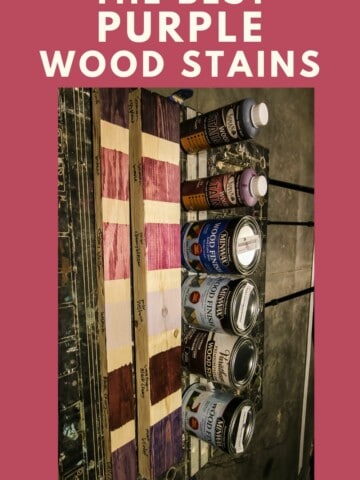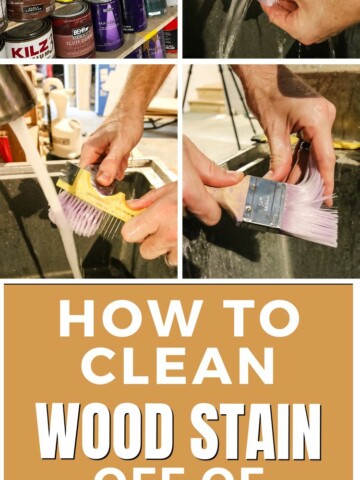Discover the key differences between gel stain vs regular stain to choose the best option for your woodworking project. Learn about their advantages, application techniques, and suitability for various types of wood and finishes in our comprehensive wood stain guide.
When you are new to woodworking or furniture refinishing, every step of the process can feel overwhelming.
Once you decide that you want to stain your wood, you know you're gonna have to pick the perfect stain color. And don't worry – we tested a ton of wood stains on different types of wood to make that easier for you.
But, did you know that you also have to pick which type of wood stain to use?
Today we want to talk about gel wood stain, and specifically gel wood stain versus regular stain so you can understand the differences and choose the right stain product for your project.
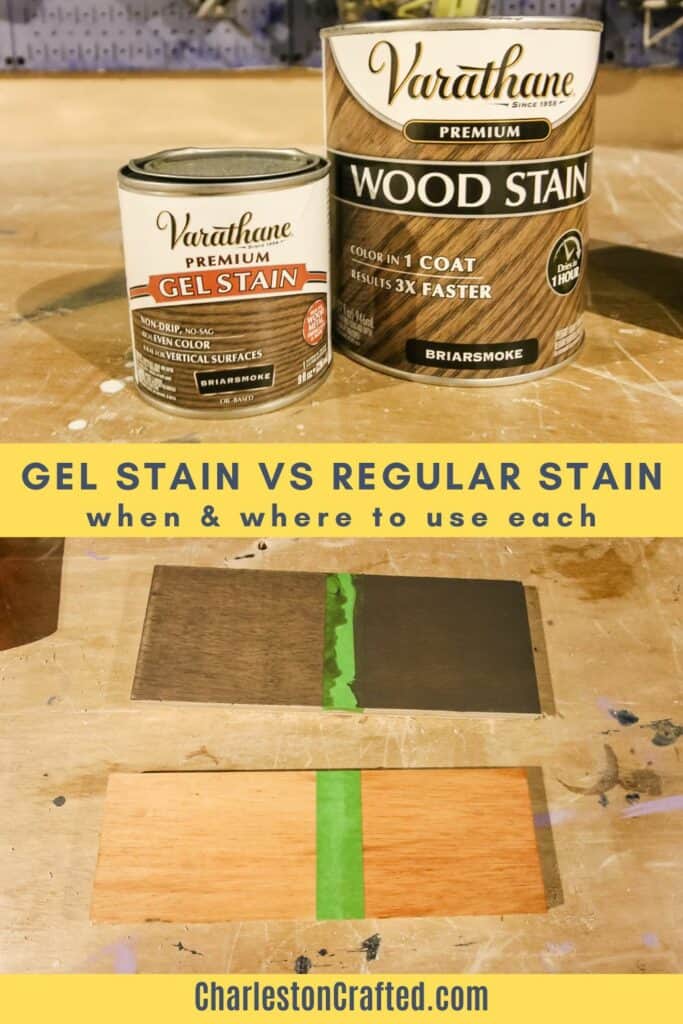
What is Gel Stain?
Gel Stain is a type of oil-based wood stain that is much thicker than regular stain. Seriously - it's as thick as pudding and, as you might imagine, goes on thicker and darker when compared to traditional stain.
Gel stain sits more on the surface of your wood instead of being quite as penetrative as traditional stain. Because of this, it's a great option for non-porous surfaces where you want a stain to sit on the surface.
That also makes it great for softer woods, like pine. These wood types absorb stain unevenly due to variance in dryness of the wood - which can be helped by applying a pre-stain wood conditioner.
A gel stain will sit more on the surface of the wood, and therefore is unaffected by differences in dryness levels of the surface. It just gives a more even finish, even on soft woods!
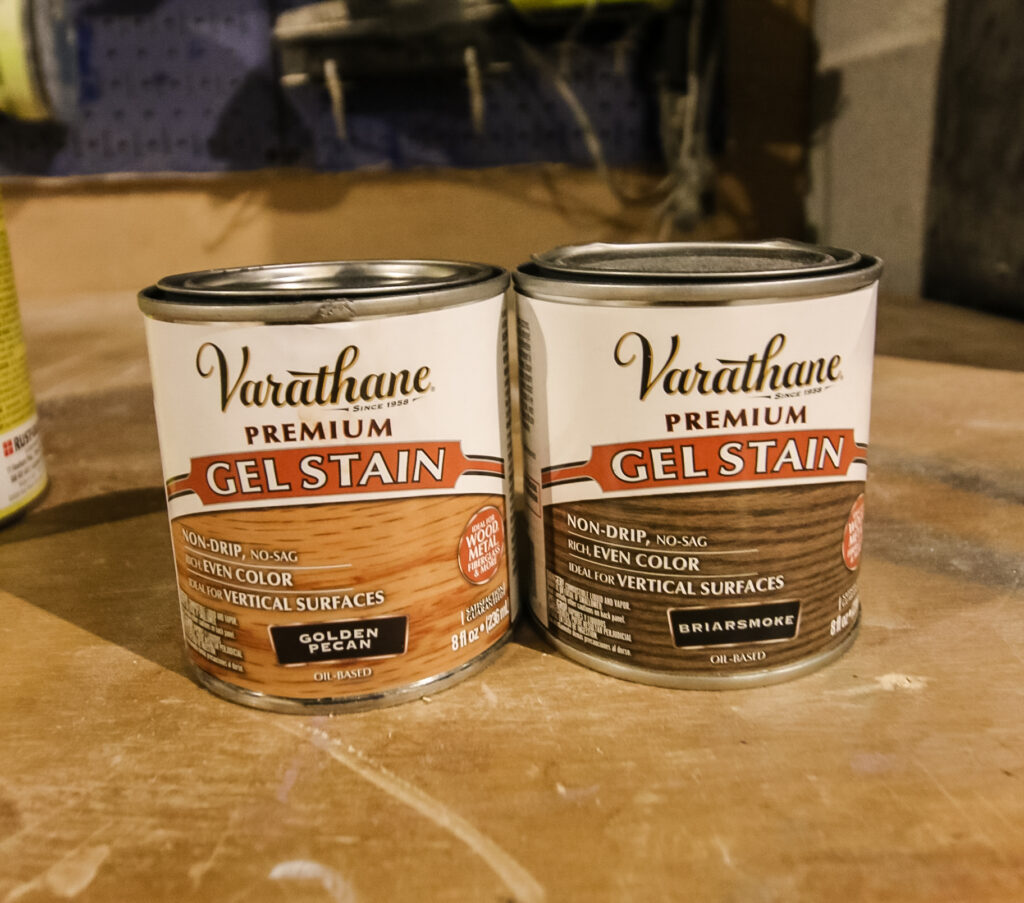
Advantages of gel stain:
There are definitely some advantages to choosing a gel stain!
- Thick texture means it does not drip, so it can be easier to apply, especially on vertical surfaces.
- Makes it easy to get uniform color, even on softer woods that tend to get splotchy.
- Sits on the surface - which is perfect for staining over painted wood
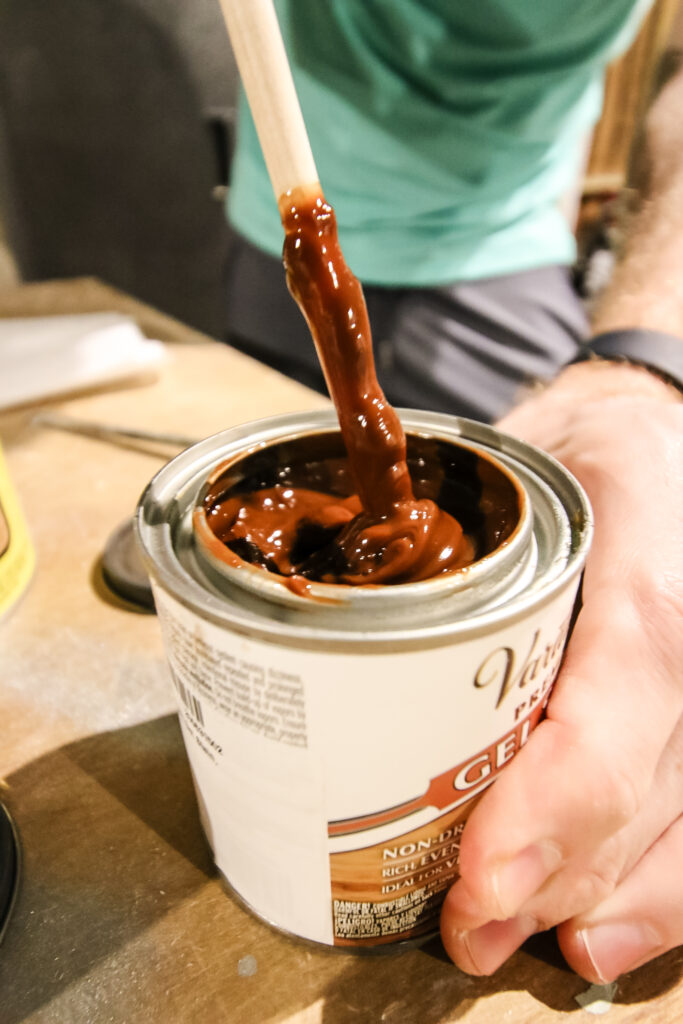
Negatives of gel stain:
There are also some drawback to working with gel stains.
- A less penetrative finish means that the stain will sit on top of the surface of certain types of wood, rather than altering the underlying wood color significantly.
- Longer drying time compared to traditional wood stains
- More opaque finish could cover beautiful natural wood grain
- You have to be careful with getting the color right - layering too many coats will lead to a super opaque, paint-like finish, so it's best to pick the right color the first time if possible.
- Gel stain is typically more expensive than traditional stains
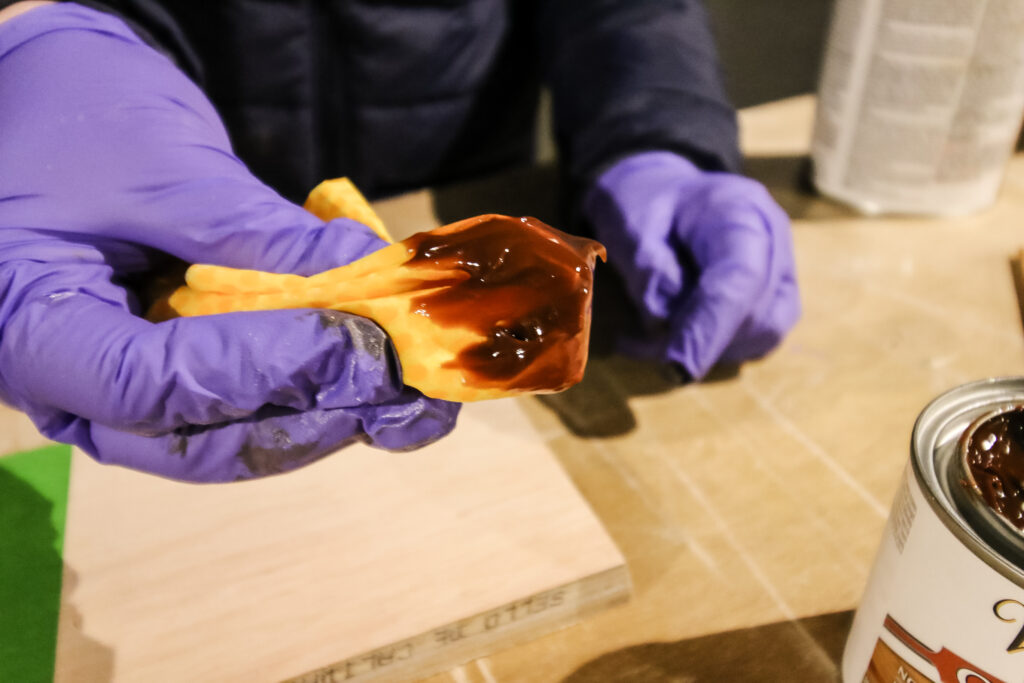
Understanding Regular Stain
Traditional stains have a liquid texture - they run like water - and come in both oil and water-based varieties.
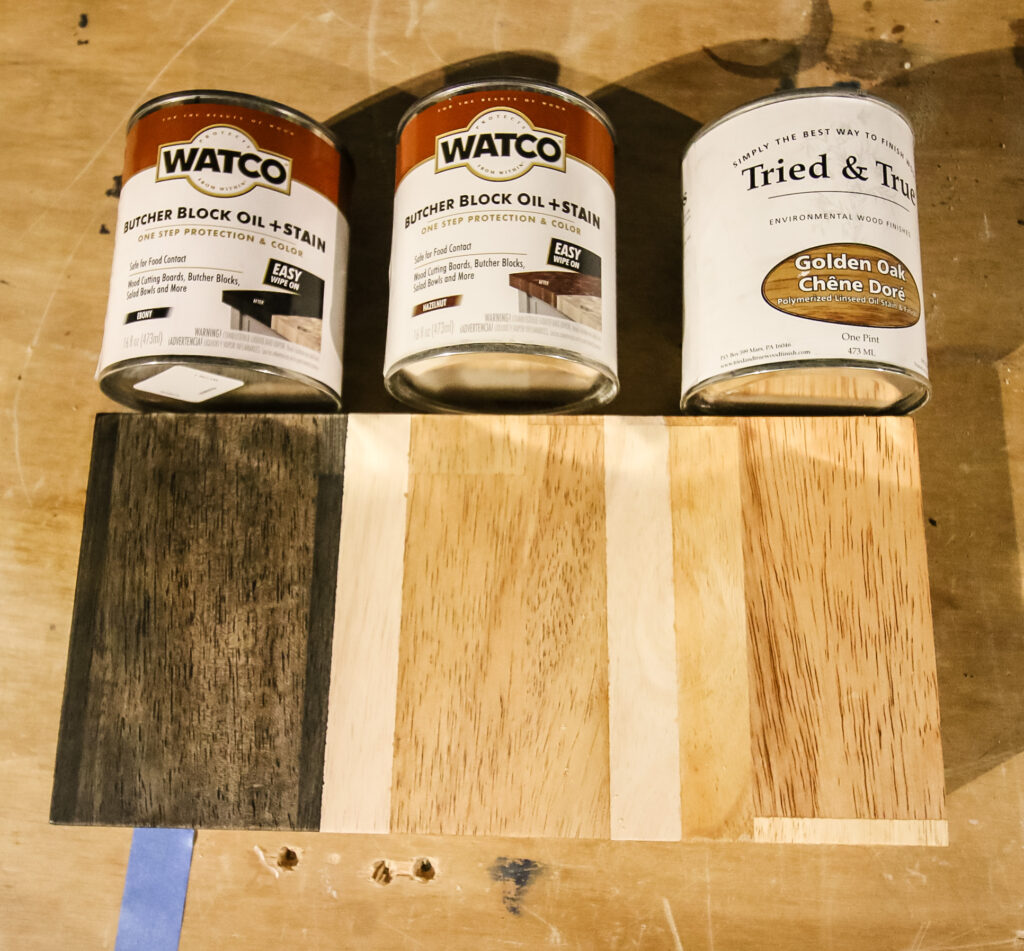
Water-Based Stains
Water-based stains use water as their solvent, which means the carrier for the pigment is primarily water, with other chemicals added to improve performance and durability.
Advantages of water based wood stains
- Quick Drying: They dry faster than oil-based stains, allowing for quicker project completion.
- Easy Cleanup: Cleanup can be done with soap and water, without the need for harsh chemicals.
- Low Odor: They emit less odor and have lower volatile organic compounds (VOCs), making them more environmentally friendly and safer for indoor use.
- Non-Yellowing: Water-based stains tend not to yellow over time, maintaining their color clarity better than oil-based options.
Disadvantages of water based wood stains
- Grain Raising: The water in the stain can raise the grain of the wood, requiring additional sanding between coats.
- Color Depth: They may not penetrate as deeply into the wood, potentially resulting in a less vibrant color compared to oil-based stains.
- Durability: While technology has improved, water-based stains may not be as durable as their oil-based counterparts.
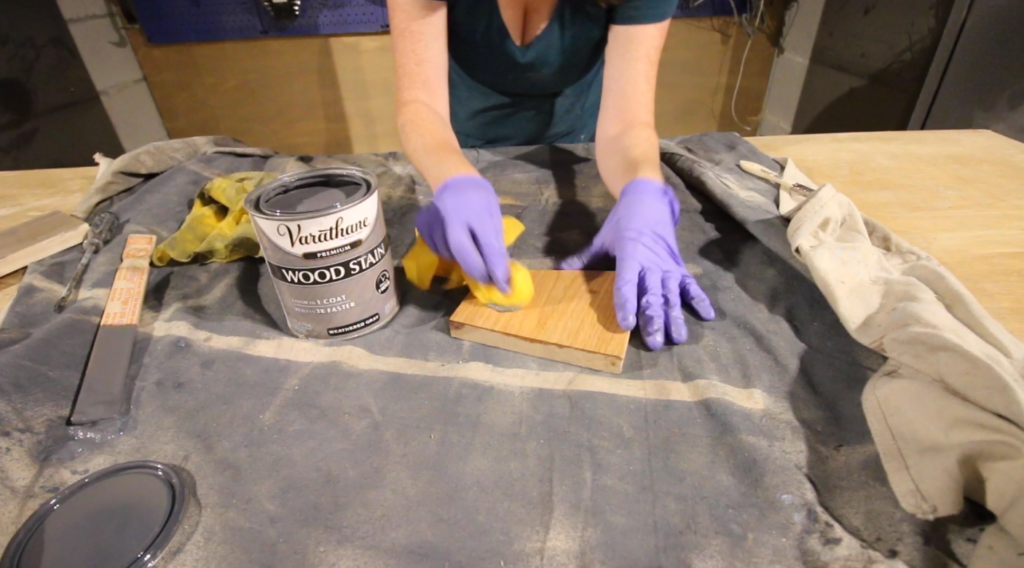
Oil-Based Stains
Oil-based stains use oil (typically linseed or other natural oils) as the solvent, which carries the pigment and binder into the wood.
Advantages of oil based wood stains
- Deep Penetration: They penetrate deeply into the wood, enhancing the grain and providing a rich, vibrant color.
- Ease of Application: The slower drying time allows for a longer work time, making it easier to achieve an even finish without lap marks.
- Durability: Generally considered more durable, offering better protection against scratches and moisture.
Disadvantages of oil based wood stains
- Longer Drying Times: The extended drying times can slow down project timelines.
- Cleanup: Requires solvents like mineral spirits or turpentine for cleanup, which are more hazardous and necessitate proper disposal.
- Odor and VOCs: They have a stronger odor and higher VOC levels, making them less environmentally friendly and potentially hazardous for indoor use without proper ventilation.
Choosing Between Water-Based and Oil-Based Stains depends on the specific requirements of the project, including desired finish, working conditions, environmental considerations, and the type of wood being stained.
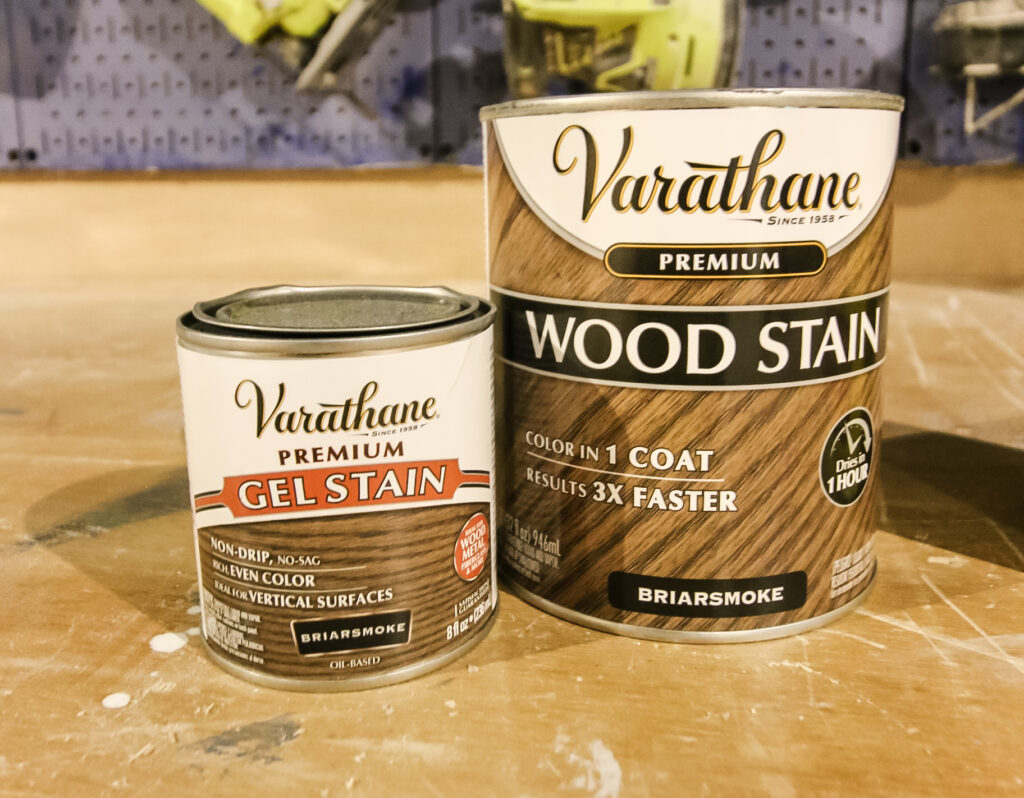
Choosing Between Water-Based and Oil-Based Regular Stains
You will have to choose the type of stain that is best for your project. Water-based stains are often chosen for their ease of use and eco-friendliness, while oil-based stains are selected for their durability and depth of color. We primarily use water-based stains because it is a lot easier for DIYers to work with!
What's the Difference Between Gel Stain and Regular Stain?
There are differences in consistency, application techniques, drying times, finish durability, and suitable projects for each stain type.
| Feature | Gel Stain | Oil-Based Stain | Water-Based Stain |
|---|---|---|---|
| Consistency | Thick, gel-like texture allows for easy control and minimal dripping. | Thinner than gel, but thicker than water-based stains, offering a smooth application. | Thin, liquid consistency, quick to apply but may require careful application to avoid drips. |
| Application Techniques | Can be applied with a cloth, brush, or sponge. Ideal for vertical surfaces and projects requiring precision. | Applied with a brush or cloth, good for achieving deep penetration and enhancing wood grain. | Best applied with a brush or spray for an even coat. Suitable for detailed work due to its quick drying time. |
| Drying Times | Longer drying times, allowing for workability but requires patience. | Slower drying times than water-based, providing a longer work time for blending and wiping away excess. | Fast drying, which can speed up project completion but requires quick work to avoid lap marks. |
| Finish Durability | Provides a durable finish that sits on the surface, may not penetrate as deeply as oil-based stains. | Deeply penetrates the wood, offering enhanced durability and a protective finish that lasts. | Durable finish that's resistant to moisture and fading. However, it may not penetrate as deeply, affecting long-term durability. |
| Suitable Projects | Ideal for refinishing existing finishes, vertical surfaces, and woods prone to blotching. Also good for faux wood effects. | Perfect for outdoor projects, furniture, and areas requiring robust protection. Enhances the natural beauty of the wood. | Great for indoor projects, crafts, and surfaces where quick drying and low VOCs are important. Works well on woods that don't absorb stains well. |
| Environmental Considerations | Low VOC options available, but varies by brand. Generally safer for indoor use compared to traditional oil-based stains. | Typically high in VOCs, requiring proper ventilation during application. Less environmentally friendly. | Low VOCs, minimal odor, and easy water cleanup. The most environmentally friendly option among the three. |
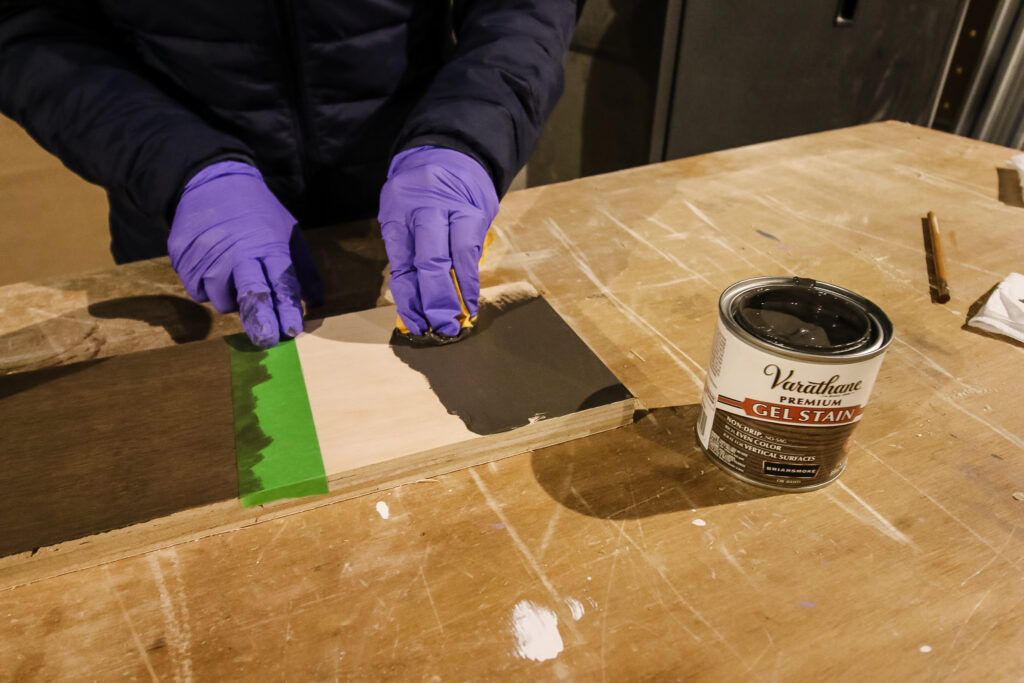
When Should You Use Gel Stain?
Some of the best uses for gel stains are:
- Staining vertical surfaces like cabinets - because gel stain won't drip
- Working with woods prone to blotching - like pine
- When a project also involves non-wood materials - since gel stain can be used on paint, fiberglass, or metal, too.
- On refinishing projects where it is difficult to get 100% of the existing wood finish off - gel stain goes over existing finishes well!
- When staining over painted surfaces for a wood-like finish.
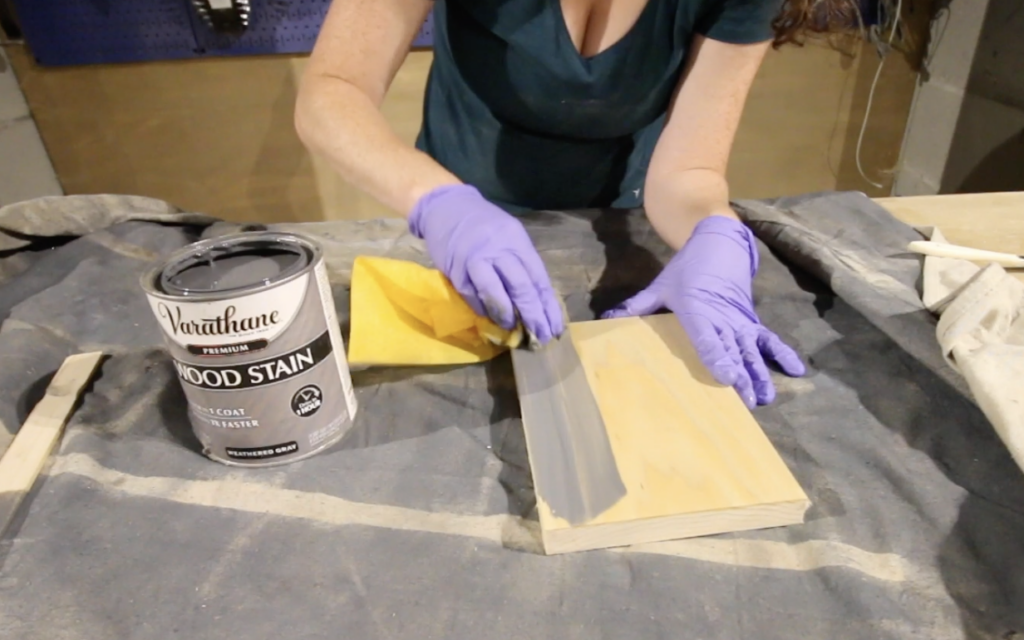
Wood staining essentials!
- Recap of the key points discussed, highlighting the importance of matching the stain type to the project's needs and the woodworker's preferences.
- Final thoughts on experimenting with different stain types to find the perfect match for each unique woodworking project.
Want help getting the perfect wood stain finish?
Be sure to grab our FREE wood stain troubleshooting cheat sheet, with the top staining problems + easy solutions for each!
Any more questions about gel wood stain?
Looking for something?
We've been doing this since 2012 so we have a LOT of blog posts!
Search stuff like: Ceiling Projects | DIY Plant Stands | Thrift Flips


Hello, I'm Morgan, half of the creative force behind CharlestonCrafted.com! With a passion for DIY that dates back to 2012, I've transformed three homes and now I'm dedicated to helping others craft their dream spaces. Let's turn your house into a home together!




